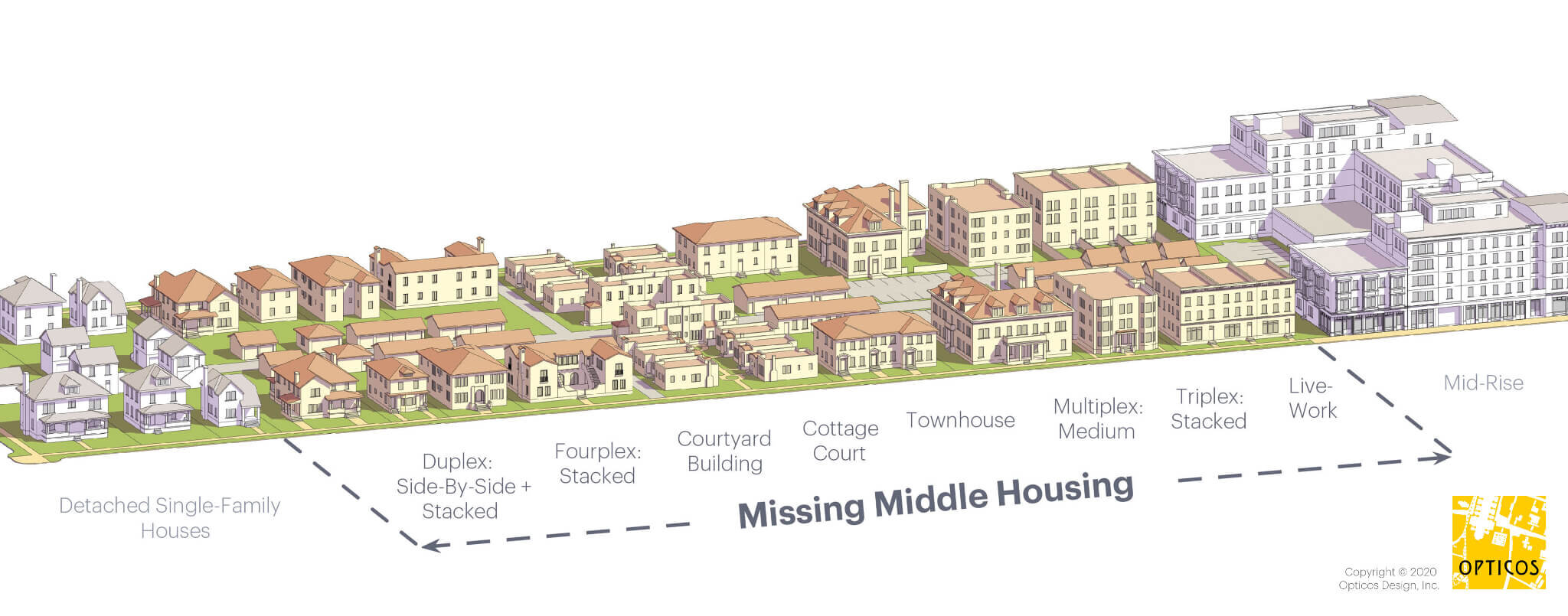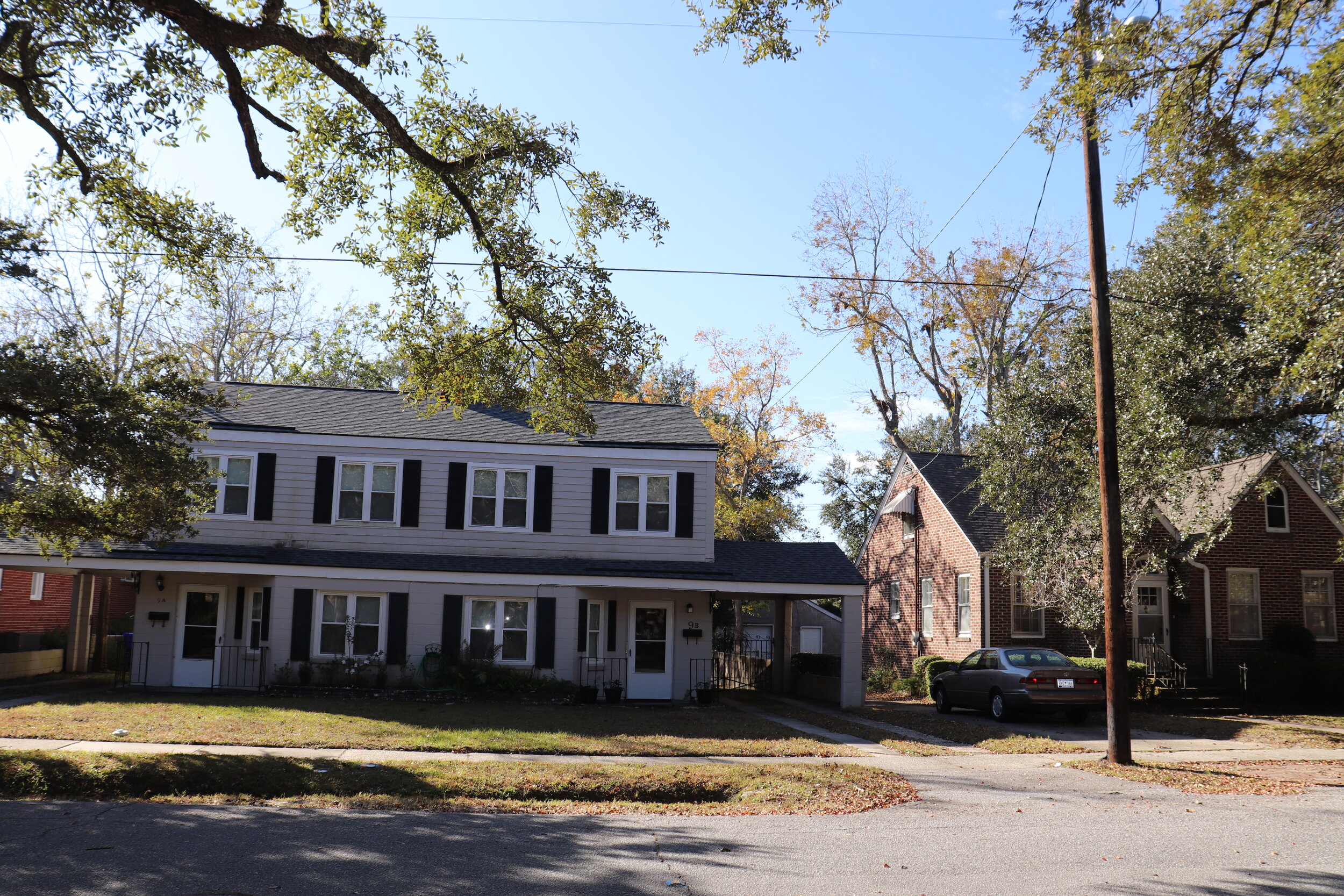Finding the missing middle in charleston’s past
If you have been listening in on City Plan meetings or following some of our postings you may have heard the term “Missing Middle” as a possible solution (one of many) for housing issues in Charleston. As you look around you might ask yourself, “what is missing?” We have houses, townhomes, and apartments, even some very large apartments, certainly we are not missing anything. The Missing Middle is a nationwide movement to allow for a mixture of living styles in one neighborhood.
Image credit: Opticos Design, Inc.
When many people think about housing options available, their minds may alternate between the images of single family houses and mid-rise apartment buildings. The Missing Middle represents the various housing options between those two extremes such as duplexes and triplexes. Missing Middle refers to how Americans used to build and live before the automobile and other financing structures favored constant construction and suburban sprawl.
Quadplex next to a single family home in Wagener Terrace
Did you know that the neighborhoods of Hampton Park, Wagner Terrace, and South Windermere are not exclusive single-family areas? Each of these historic neighborhoods have within them a blend of housing styles which the missing middle looks to recapture. As you go down streets you may see a triplex (three unit), next to a single family dwelling with a garage accessory dwelling unit, and an 8 unit apartment bookending the block. This pattern of developing with housing diversity in mind had huge impacts on economic mobility within neighborhoods.
As a recent college graduate, you may move into a more affordable apartment unit. Eventually, you might purchase a home around the corner or maybe you saved enough to build a duplex or a garage apartment and lease out the other side for added income. Later in life, when you wanted to downsize after having kids, you could move into the triplex up the street. Having a rich diversity of housing stock allows people to stay in the places they love even as their lifestyle or income changes through the years. This flexibility and strength in the diversity of the housing stock was a trademark of the Missing Middle housing development style that dominated American cities and towns for decades.
A duplex nestled between two single family homes in Old Windermere
Recently, the Ashley Bridge District won the South Carolina chapter of American Planning Association (SCAPA) inaugural Great Places SC for Neighborhoods. This award was given to the Ashley Bridge District because of the interconnectivity of the area, the diversity of housing that is woven into the fabric of the district, and the ability for people to grow in the neighborhoods they have come to love. Each of these factors is not exclusive to the Ashley Bridge District, but are common throughout many neighborhoods that contain Missing Middle housing. As we move forward with City Plan and the housing analysis, we have a wonderful opportunity to reinvigorate our housing stock by allowing for a diversity of housing types, which can help improve the quality of life for community members citywide.
Missing Middle Housing in Greenville, SC
Just as missing middle housing dominated neighborhoods around the country in the past, today many cities and towns nationwide are looking to the missing middle to solve some housing and quality of life concerns. Below is a video about the need for missing middle housing in Greenville, SC which highlights many of the same issues that community members face here in Charleston:
Video credit: Upstate Forever




